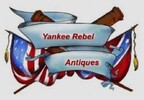 Loading... Please wait...
Loading... Please wait...-
Call us on (973) 810-2976
- My Account
- Gift Certificates
- Items / $0.00
All prices are in All prices are in USD
Categories
- Home
- Sold, Hold, Layaway items
- Revolutionary War Lead-melting Ladle for musket balls, found at Crown Point, NY (SOLD)
Revolutionary War Lead-melting Ladle for musket balls, found at Crown Point, NY (SOLD)
Out of Stock
Product Description
This is another rare piece being offered, it is a hand-forged, Revolutionary War Lead-melting ladle, measuring 12 ¾” x 2 ¾”. These ladles were used for melting lead for making musket balls and pouring it into handheld molds. This one was recovered many years ago from the ruins of Crown Point, NY.
At the outbreak of the American Revolution, the rebellious colonists looked to Crown Point to aid their cause. The surrender of Fort Crown Point to American rebel troops commanded by Seth Warner in May of 1775 yielded 114 pieces of cannon and heavy ordnance sorely needed by the Americans. Colonel Henry Knox carried twenty-nine of these to Boston during that winter to force the British out of the city.
After the capture of the fort, Crown Point became a springboard for an invasion of Canada. General Richard Montgomery's force sailed down the lake in August 1775. Despite initial success in Montreal, the combined forces of Montgomery and Benedict Arnold were defeated at Quebec in December 1775. They retreated in disarray, riddled with smallpox, to Crown Point. Men died by the hundreds in makeshift field hospitals and were buried in mass graves.
Crown Point was a staging area for the British in both 1776 and 1777. After the Americans abandoned Crown Point, the British assembled their troops here. Delayed by the American Navy, Sir Guy Carleton arrived here with his troops in October of 1776 but retreated north for the winter shortly thereafter. British General John Burgoyne's army arrived here in June of 1777. Crown Point remained under British control until the end of the war.
Revolutionary War soldiers melted lead for musket balls, often using sources like church roofs, pewter, or even lead statues, and pouring them into handheld molds. While British soldiers were often supplied with pre-made cartridges, colonial militias and soldiers frequently had to create their own ammunition on-site or have blacksmiths make it for them. This was a crucial and labor-intensive task to keep up with ammunition needs, and the practice is evidenced by musket balls found with a mix of lead, tin, and other materials from household items like pewter mugs and plates.
This ladle is in very nice condition, showing its age and use, but no heavy rust – indicative of an early recovery. Bullet ladles are different than cooking ladles by having the small notch on the side of the bowl for pouring into the molds. There are examples in "Collector's Illustrated Encyclopedia of the American Revolution" by Neumann & Kravic and the "Museum of the American Revolution" (see pictures).
Revolutionary War artifacts have always been difficult to find. With the upcoming of the 250th anniversary of the nation's founding next year, there will be a revitalized interest. Just about all Revolutionary War relics and artifacts will be in demand, which will only add to their scarcity and price. I am already seeing a substantial increase in sales.



